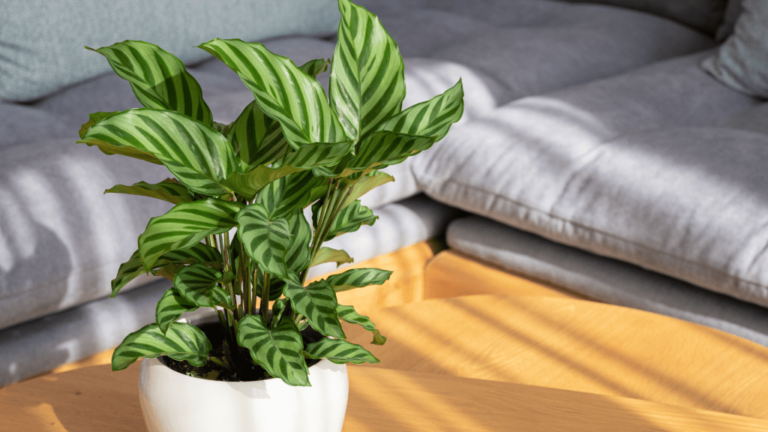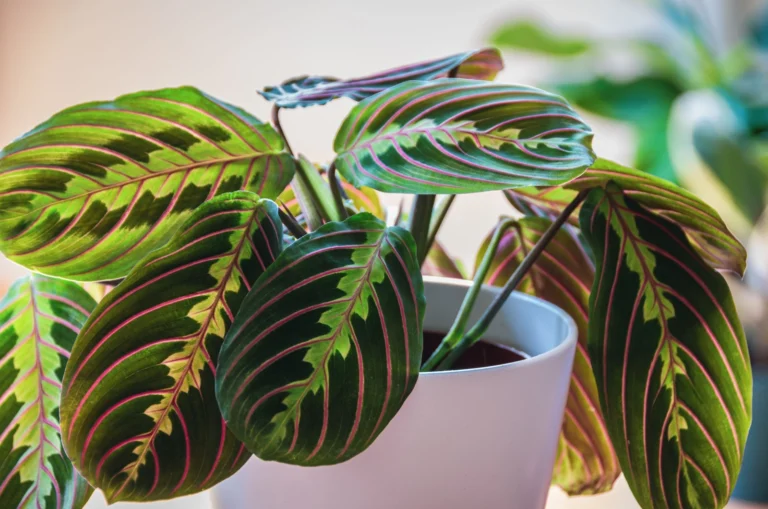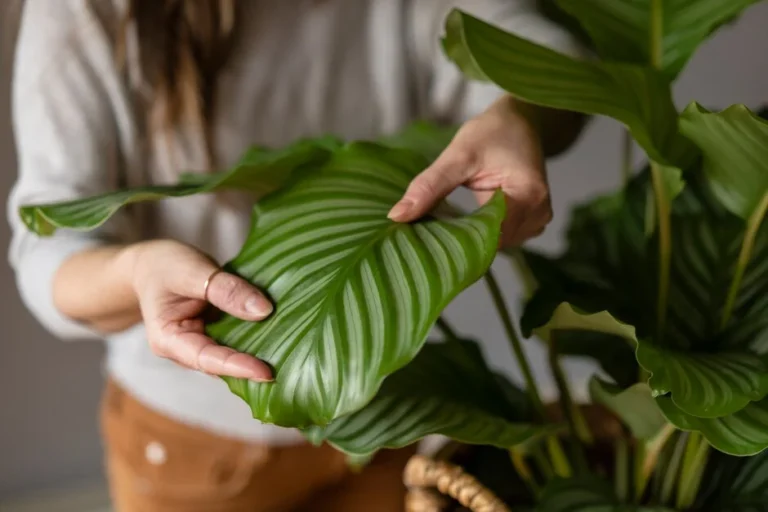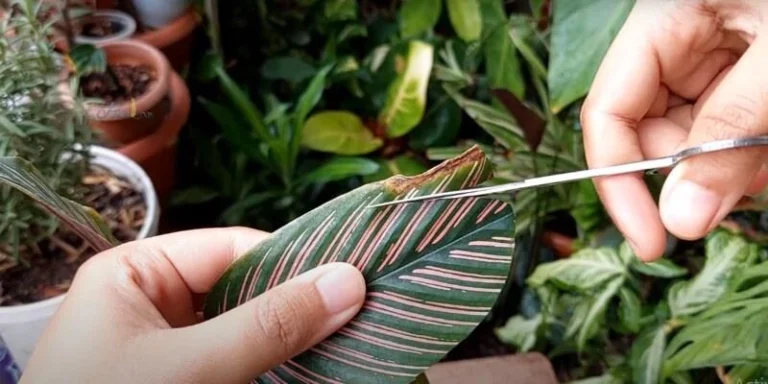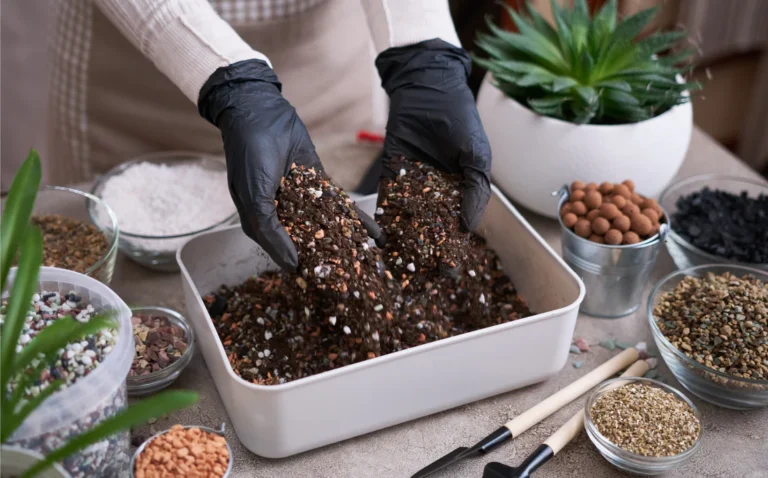Common Calathea Pests: Identification, Treatment, and Prevention
Calatheas have stunning leaves, but pests love them too. If you’ve seen tiny webs, sticky spots, or holes in your plant’s leaves, you’re dealing with calathea pests. These bugs can turn leaves yellow, stunt growth, or even kill your plant if ignored.

6 Calathea Pest – Identification & Treatment
Don’t worry—this guide helps! We’ll cover:
By the end, you’ll know exactly how to protect your Calathea.
1. Spider Mites: The #1 Threat To Calathea
Calatheas face many pests, but spider mites on calathea cause the most damage. These tiny bugs thrive in dry air and spread fast. Act quickly to save your plant.
How to Identify Spider Mite Damage on Calathea?
Check for fine white webs under leaves. Look close – mites are smaller than sand grains. Leaves show yellow dots or stippling. Leaves turn dull and dry. Bad cases make leaves drop early. Inspect weekly for these signs.

How to Eliminate Spider mites from Calathea Plants?
First, wipe leaves with water daily. Spray neem oil mix every five days. Cover leaf tops and undersides. Raise humidity above 85% using a humidifier or pebble tray. Move the plant away from vents. Use miticides only if mites return after two weeks. Follow label instructions exactly.
2. Mealybugs: White Cottony Invaders on Calathea
After tackling spider mites, check for mealybugs on calathea plants. These soft-bodied insects cluster in hidden spots.
How To Spot Mealybug Hideouts?
Examine leaf joints and stem connections of calathea plants carefully. Peel back new growth sheaths. Search under older leaves near soil lines. White cotton-like egg masses confirm activity. Sticky honeydew residue often coats nearby surfaces.
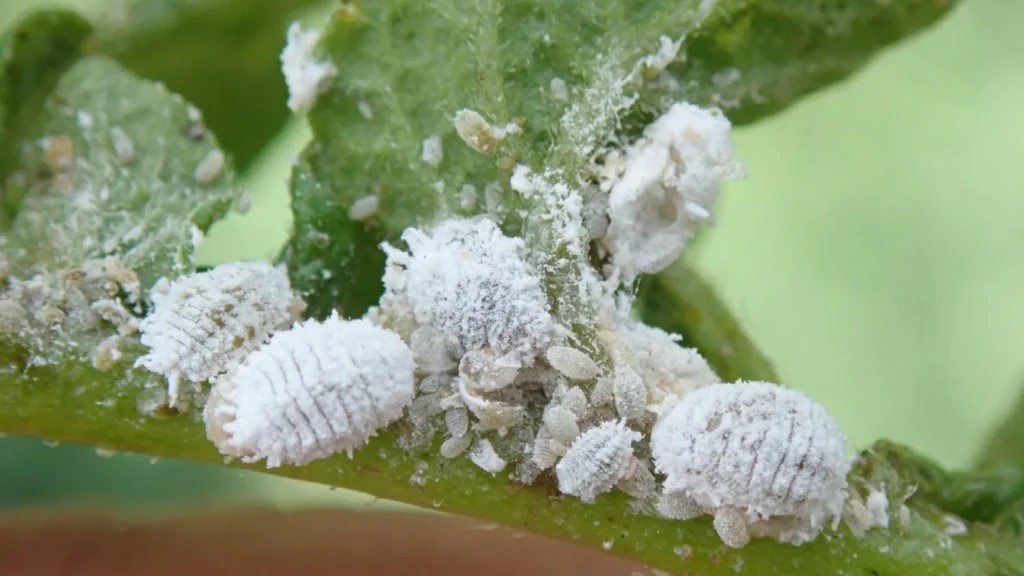
How To Remove Mealybugs from Calathea?
Dip cotton swabs in 70% rubbing alcohol. Press directly onto each insect cluster. Repeat every three days for two weeks. Apply insecticidal soap sprays weekly. Cover all leaf surfaces thoroughly. Quarantine infected plants for one month.
3. Scale Insects on Calathea
After removing mealybugs, inspect for scale insects on prayer plants. These immobile pests attach like tiny barnacles to your Calathea.
How To Recognize Scale Varieties on Calathea?
Identify soft scales first. They resemble brown, waxy bumps on stems and leaf veins. These secrete sticky honeydew residue that attracts ants. Armored scales appear as hard, dome-shaped shields in gray or white. They cluster on leaf undersides. Both types cause yellowing leaves and stunted growth.
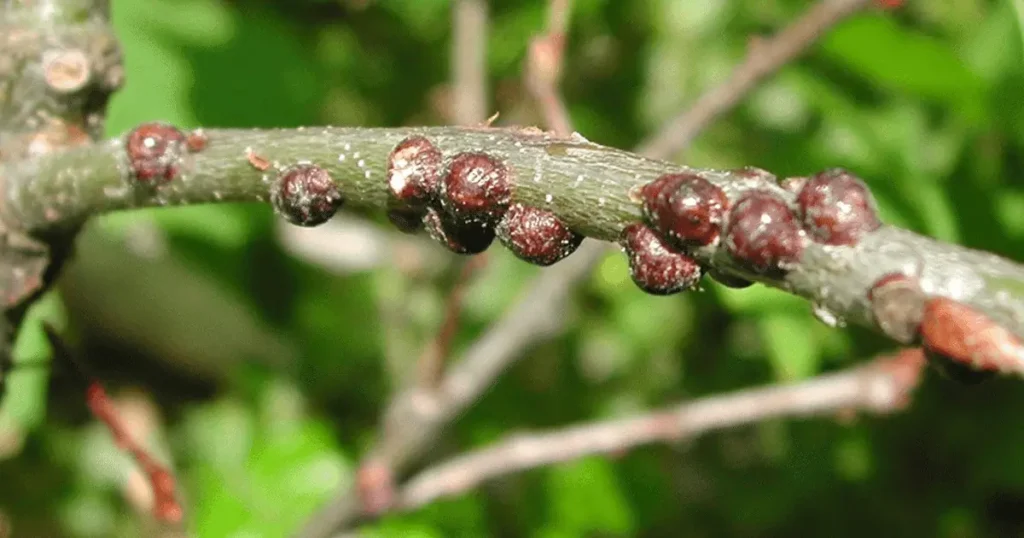
How To Remove Scale Insects on Calathea?
Begin manual scraping with a soft toothbrush. Gently rub affected areas to dislodge shells. Wipe away residue with alcohol-dipped cotton. Apply horticultural oil sprays thoroughly every 7 days. Cover every stem crevice and leaf surface. Repeat treatment for 4 weeks minimum. This breaks their life cycle by suffocating new hatchlings.
4. Fungus Gnats on Calathea
Unlike scale insects, fungus gnats control targets pests in your Calathea’s soil. These flies thrive in moist potting mix.
Larval Damage vs. Adult Nuisance on Calathea
Larvae harm Calathea roots directly. They chew root hairs, causing wilting and slow growth. Adults don’t damage plants but swarm around soil. They lay eggs in wet topsoil.
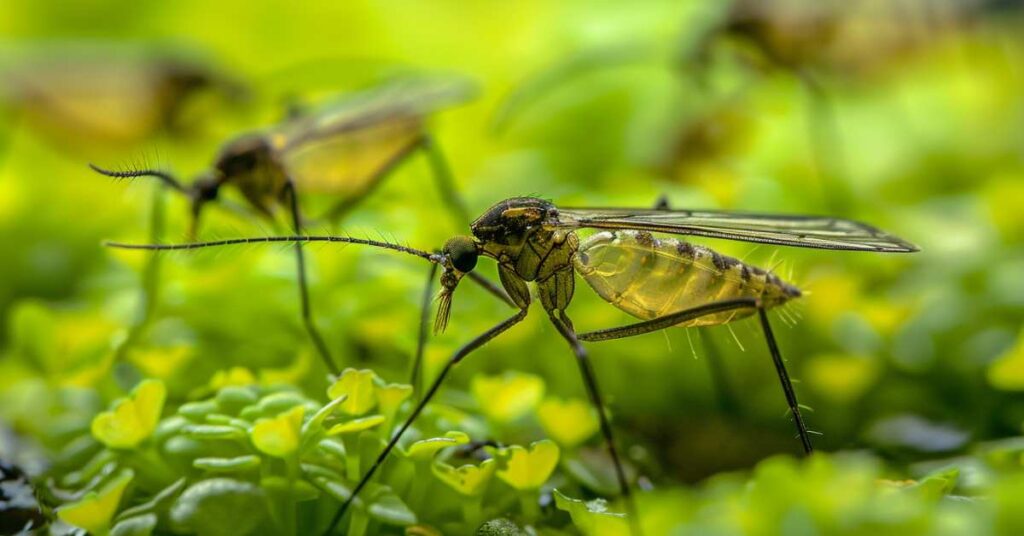
Control Methods For Fungus Gnats on Calathea
For fungus gnats control on Calathea:
5. Aphids and Thrips: Sap-Sucking Duo Attacking Calatheas
While fungus gnats target roots, stopping aphid and thrip infestations on Calatheas addresses leaf invaders. These pests pierce foliage, draining vital sap.
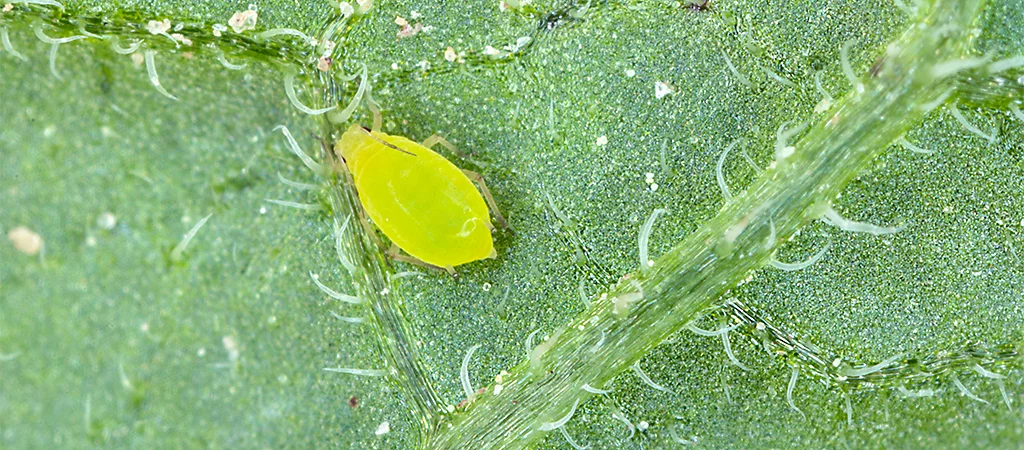
Symptom Comparison on Calathea Leaves
Aphids leave sticky honeydew on new growth. This shiny residue develops black sooty mold. Leaves curl downward.
Thrips create silver streaks on patterned Calathea leaves (like ornata or medallion). New leaves emerge distorted or shredded.
Aphids & Thrips Treatment Approach for Calathea
- Spray-downs
- Blast leaves with water every 2 days to dislodge pests.
- Apply insecticidal soap to undersides (aphids hide here).
- Predatory insects
- Release lacewing larvae near infected plants.
- They eat 200+ thrips/aphids daily without harming Calatheas.
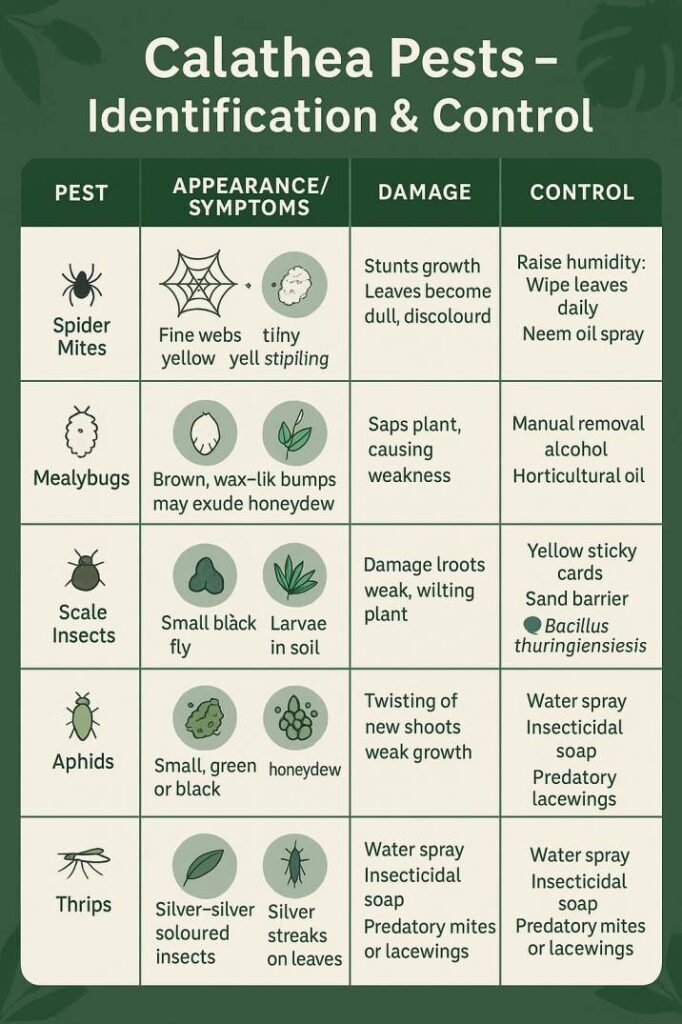
Proactive Prevention: Shield Your Calathea
After treating active pests, prevent calathea pests from returning. Consistent care blocks future infestations.
1. Humidity and Hygiene Essentials for Calathea
Maintain 60-70% humidity around your plant. Use a hygrometer to monitor levels daily. Wipe leaves every week with damp cloths. Clean both leaf surfaces to remove dust. This disrupts pest habitats.
2. Quarantine and Inspection Best Practices
Isolate new Calatheas for two full weeks. Keep them away from other houseplants. Check established plants weekly for early signs. Examine leaf undersides and stem joints closely. Use magnifying glasses for tiny eggs.
Organic vs. Chemical Treatments for Calathea Pests
After learning prevention, tackle active infestations. Start with organic pest remedies to protect your Calathea’s delicate leaves.
Safe Organic Solutions
Make neem oil spray using 2 teaspoons oil, 1 quart water, and 1 teaspoon mild soap. Shake well before spraying every leaf surface weekly. This mix smothers pests without harming roots. Add beneficial nematodes to moist Calathea soil. These tiny worms hunt and eat pest larvae naturally. They work for three months after one application.
When to Use Chemical Pesticides
Choose chemicals like imidacloprid only for severe thrip or scale attacks. Apply outdoors on calm days. Wear gloves and a mask during spraying. Keep children and pets away for 48 hours. Risks include burned leaf edges and contaminated soil. Never use chemicals more than twice per year.
Also check How to Care for a Calathea Plant?
Conclusion
Following treatment choices, remember that early pest identification stops permanent harm. Spotting webs, sticky residue, or yellowing quickly saves your Calathea. Consistent humidity control and inspections block infestations before they spread.
With these tactics, calathea pests become manageable. Your plant thrives when you act fast.

About Author
Hi, I’m Emily Davis, a passionate tropical plant enthusiast dedicated to sharing knowledge and expertise with plant lovers. Through his blog, I will provide guides, tips, and tricks for caring for tropical houseplants species like Alocasia, Anthurium, Calathea, Philodendron, Begonia, and many more that will help readers bring a touch of paradise into their own homes. With a deep love for the vibrant colors and lush textures of tropical flora, I’m committed to inspiring others to cultivate their own tropical oasis.

